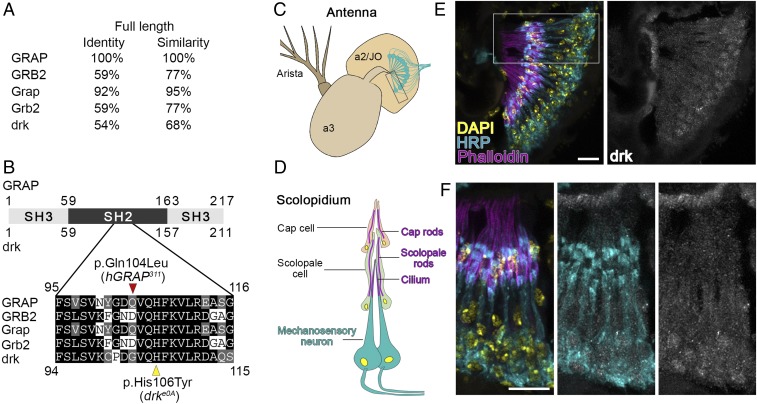Fig. 3.
drk is the Drosophila homolog of human GRAP and is expressed in the scolopidia. (A) Homology of human, mouse, and Drosophila adaptor proteins GRAP/GRB2/drk scored by full-length amino acid identity and similarity. (B) Diagram illustrating the protein structure of GRAP and drk. Sequence alignment of a partial SH2 domain shows evolutionary conservation (the black background indicating identical amino acid and the gray background indicating a similar amino acid). The red arrow head indicates the mutation identified in humans with nonsyndromic HL. The yellow arrow head indicates a Drosophila mutant allele. (C) Schematic shows Drosophila antenna. Mechanosensory neurons (labeled with cyan) are suspended within the JO, which is the A2 segment of the fly antenna. (D) Schematic shows the organization of one scolopidium (boxed area in C). (E) Confocal micrographs show the expression pattern of drk in the JO. DAPI labels nuclei, horseradish peroxidase (HRP) labels neuronal membranes, and phalloidin labels cap rods, scolopale rods, and actin bundles in the cilium. (F) Confocal micrographs of the high magnification of scolopidia (boxed area in E). (Scale bars: E and F, 10 µm.)

